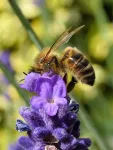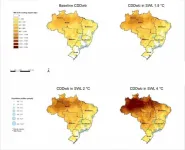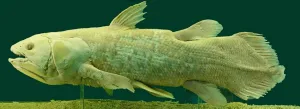How research on chronic illnesses will improve COVID-19 treatment
2021-02-10
(Press-News.org) A new paper in Oxford Open Immunology, published by Oxford University Press, examines prior findings in the field of neuroimmunology that suggest potential treatment strategies for patients suffering long-term symptoms from COVID-19.
Though COVID-19 was initially believed to be a short-term illness, lasting between one and three weeks, it's clear that a substantial number of patients will experience symptoms beyond that, with some patients suffering from health problems for more 12 weeks. In fact, for patients who were initially hospitalized, more than 80% reported at least one symptom that persisted beyond the first month.
The symptoms of long-COVID can vary widely, including cough, low grade fever, fatigue, chest pain, shortness of breath, headaches, cognitive difficulties, muscle pain and weaknesses, gastrointestinal distress, rashes, metabolic disruption, depression and other mental health conditions. In the context of other disorders and syndromes, these symptoms appear to have a strong link with a challenge to the immune system. Even mild infections and low-grade inflammation can cause depression or persistent fatigue.
As a number of causes have been proposed to explain the persistence of these long-term COVID symptoms - from the presence of persistent low viral load and reinfection, to changes in immune cell activity and tissue damage caused by the initial infection - researchers here explored insights gained in recent decades from several large-scale studies of chronic fatigue syndrome, fibromyalgia, depression and other mental health disorders that show immune abnormalities.
Researchers at King's College London here argue that several possible pathways could be relevant to understanding the persistence of long-COVID, like the involvement of glial cells and the permeability of the blood brain barrier. They also propose strategies to manage symptoms. Some of the symptoms of long-COVID, depression and other mental health problems, are related to chronic, low-grade inflammation. As such, current treatment strategies for patients with depression include anti-inflammatory medications. Psychosocial factors are also very important in regulating our immune activation. It's clear that strategies tackling a patient's level of stress with increased social support, physical exercise, and an adjusted diet could also be useful in managing long term symptoms related to COVID-19.
"We are suggesting taking advantage of what we have learnt over the years about how the brain and the immune system communicate and about the contribution of the immune system to the development of symptoms of long-COVID in other medical conditions," said the paper's lead author, Valeria Mondelli. "This is likely to accelerate our understanding of the mechanisms underlying long-COVID and the identification of effective treatments."
INFORMATION:
ELSE PRESS RELEASES FROM THIS DATE:
2021-02-10
Yams are a staple food in West Africa, which produces over 90% of the world's yams each year. Yams play a key role in the food security, economic income, and traditional culture for the region.
While they are commonly assumed to be the same as sweet potatoes in the U.S., yams are a completely different plant. The yam tubers are much starchier and drier compared to sweet potatoes. Yams are native to Africa and Asia, and most Americans have never had a true yam.
Even though yam is a staple crop for West Africa, there has been limited research to improve the genetic diversity or productivity.
Researcher Shinsuke Yamanaka focuses on improving crop breeding resources for ...
2021-02-10
Tungsten hexanitride with armchairlike hexazine N6 ring has been synthesized by a group of scientists led by Dr. Jin Liu and his former postdoc Nilesh Salke at HPSTAR (Center for High Pressure Science & Technology Advanced Research). WN6 is a promising high-energy-density and superhard material. Their findings are published in the recent issue of Physical Review Letters.
Diatomic nitrogen is the most abundant molecule in Earth's atmosphere accounting for almost 78% volume. The strong triple bond in nitrogen makes it very stable and unreactive at near ambient conditions. However, in the intense-pressure and high-temperature conditions, nitrogen will behave entirely differently, it can form double- or even single-bonded structure or react with other elements ...
2021-02-10
As abundant and widespread bees, it is common to see both bumble bees and honey bees foraging on the same flower species during the summer, whether in Britain or many other countries.
Yet researchers at the Laboratory of Apiculture and Social Insects (LASI) at the University of Sussex, have found that different bees dominate particular flower species and revealed why.
By studying 22 flower species in southern England and analysing the behaviour of more than 1000 bees, they found that 'energy efficiency' is a key factor when it comes to mediating competition.
Bee bodyweight and the rate at which a bee visits flowers determine how energy efficient they are. Bodyweight determines the energy used while flying and walking between flowers, with a bee ...
2021-02-10
Space cooling already accounts for 14% of residential electricity demand in Brazil, and it is expected to increase further because of climate change.
Very few studies investigate the relationship between climate change, cooling needs, and electricity demand. In a new study in Energy and Buildings, a team of researchers from Universidade Federal do Rio de Janeiro and CMCC@Ca'Foscari - a joint program of Ca'Foscari University of Venice and CMCC Foundation - investigate how climate and income during the period 1970-2010 shaped cooling services in Brazil. This historical relationship allows projecting the resulting energy demand for cooling services across three warming scenarios: +1.5°C, +2°C, +4°C.
The study shows ...
2021-02-10
WEST LAFAYETTE, Ind. - Emerging robotics technology may soon help construction companies and contractors create buildings in less time at higher quality and at lower costs.
Purdue University innovators developed and are testing a novel construction robotic system that uses an innovative mechanical design with advances in computer vision sensing technology to work in a construction setting.
The technology was developed with support from the National Science Foundation.
"Our work helps to address workforce shortages in the construction industry by automating key construction operations," said Jiansong Zhang, an assistant professor of construction ...
2021-02-10
The findings add to current knowledge of how insects fly and keep stable in the air. They could also help to inspire new designs in small aerial vehicles like drones, which can be useful for search-and-rescue attempts and building inspection.
Our colourful sunny-day companions can glide, fly backwards, and travel up to 54 km/h when hunting prey or escaping predators - but like any flying creature, they can be thrown off balance and even find themselves upside down.
Many land-based animals like cats, and aerial animals like hoverflies, rotate themselves around a head-to-tail ...
2021-02-10
During a study with captive vampire bats at the Smithsonian Tropical Research Institute (STRI) in Panama, a young vampire bat pup was adopted by an unrelated female after its mother died. Although this observation was not the first report of adoption in vampire bats, it is uniquely contextualized by more than 100 days of surveillance-camera footage. This footage captured by STRI research associate Gerry Carter's lab at Ohio State University reveals intimate details about the changing social relationships between the mother, the pup and the adoptive mother throughout their time in captivity.
"The adoption took place after a very sad but ultimately serendipitous occurrence," ...
2021-02-10
Adopting policies that are consistent with achieving the Paris Agreement and prioritise health, could save 6.4 million lives due to better diet, 1.6 million lives due to cleaner air, and 2.1 million lives due to increased exercise, per year, across nine countries.
New research from The Lancet Countdown on Health and Climate Change published in a special issue of The Lancet Planetary Health journal highlights the benefits to health if countries adopt climate plans - Nationally Determined Contributions (NDCs) - that are consistent with the Paris Agreement aim of limiting warming to "well below 2°C". [1,2]
The countries considered in the study represent ...
2021-02-10
The notion of social distancing rose to public prominence approximately a year ago, when health officials began recommending it as a way to slow the spread of the novel SARS-CoV-2 virus. Despite the novelty of the concept among many contemporary human audiences, social distancing has considerable precedent among animals.
Writing in BioScience, Mark Butler of Florida International University and Donald C. Behringer of the University of Florida outline the role of social distancing in nature and compare it with its human counterpart. They describe numerous animals in which distancing has evolved, including guppies, chimpanzees, birds, ants, and mice, among many others. ...
2021-02-09
The capture of the first living Coelacanth, a mighty ocean predator, off the coast of South Africa caused quite a stir in 1938, 65 million years after its supposed extinction. It became known as a "living fossil" owing to its anatomy looking almost identical to the fossil record. But while the Coelacanth's body may have changed little, its genome tells another story.
Toronto scientists have now revealed that the African Coelacanth, Latimeria chalumnae, gained 62 new genes through encounters with other species 10 million years ago. Their findings are reported in the journal Molecular Biology ...
LAST 30 PRESS RELEASES:
[Press-News.org] How research on chronic illnesses will improve COVID-19 treatment






